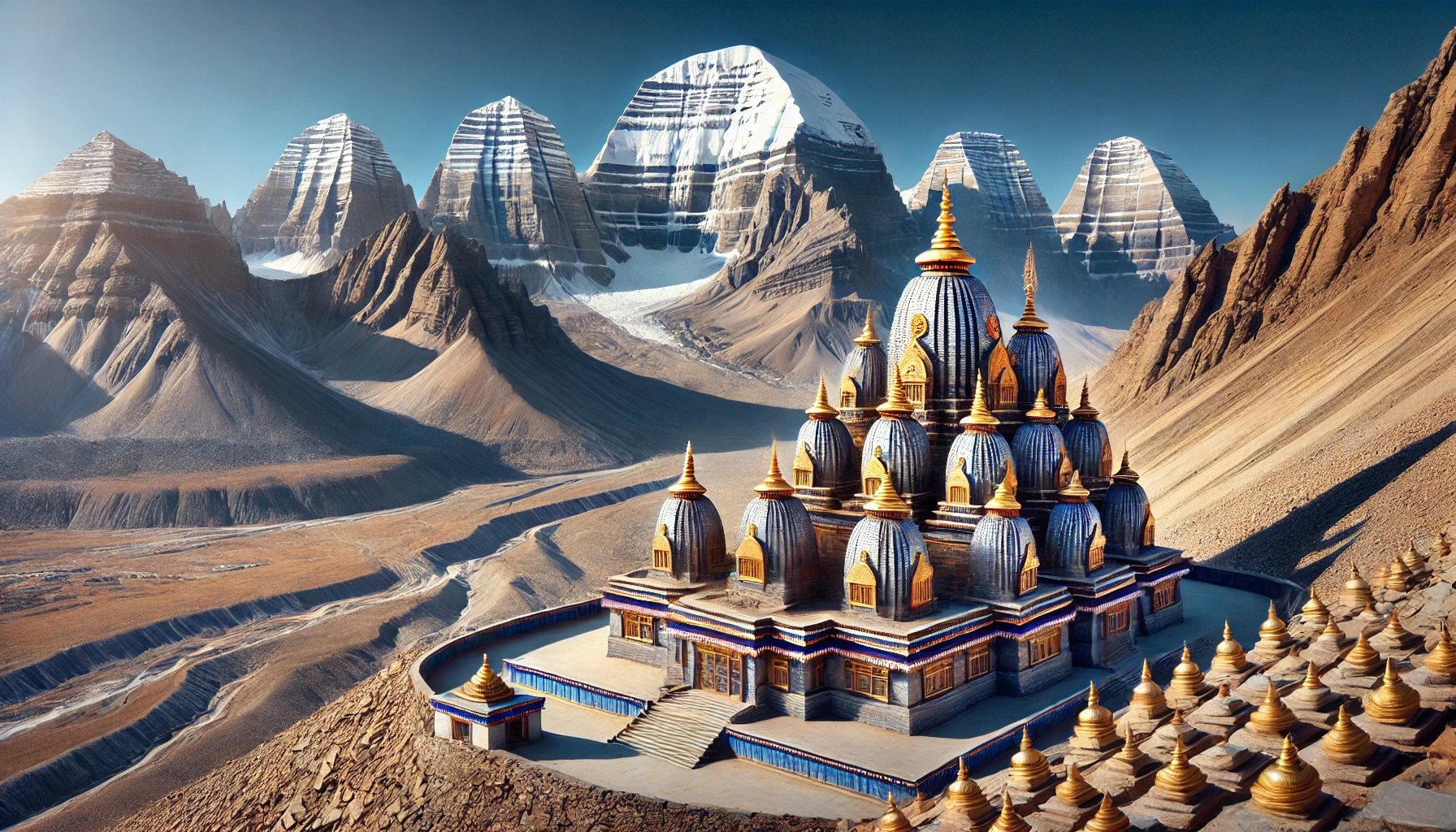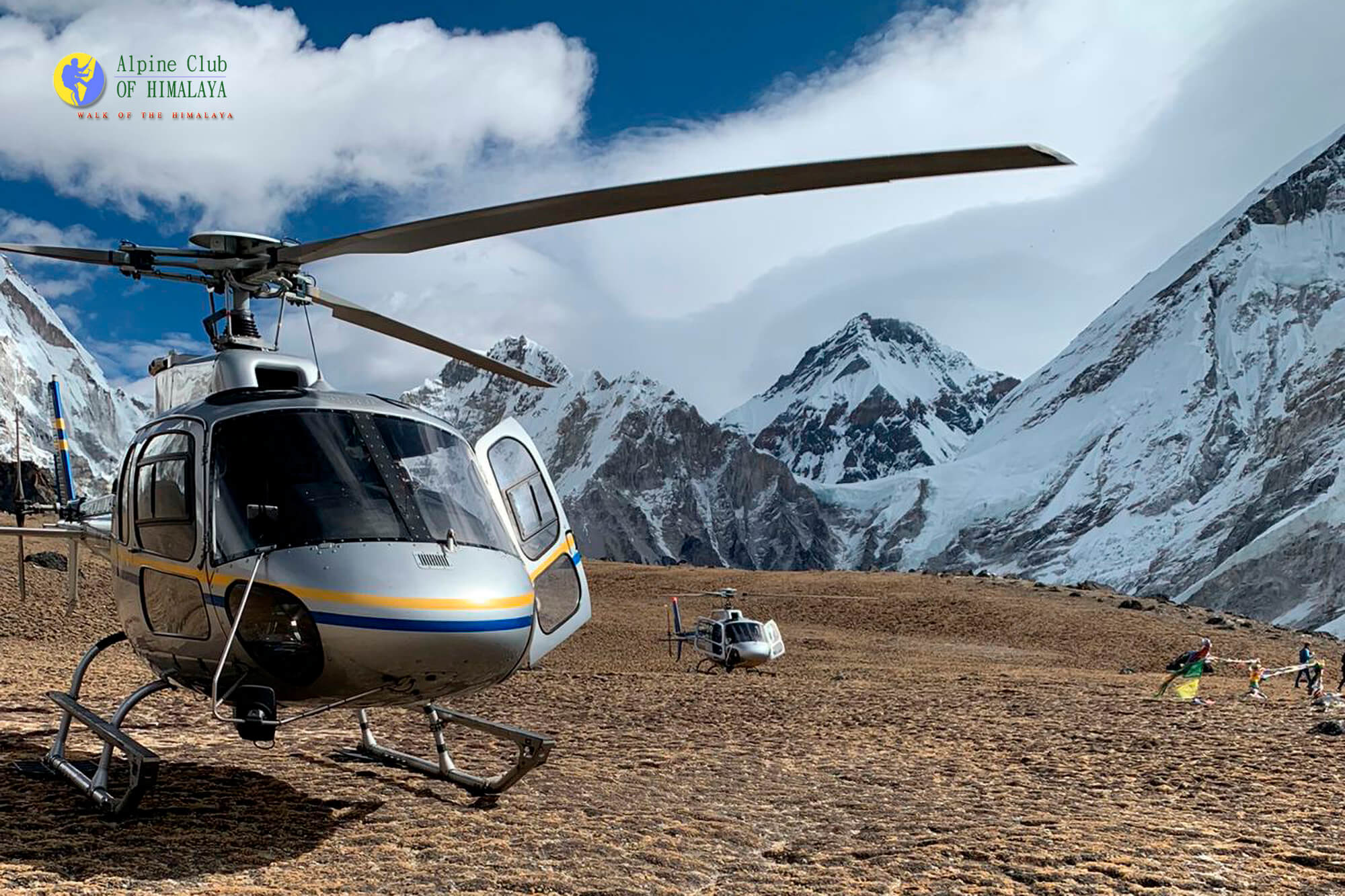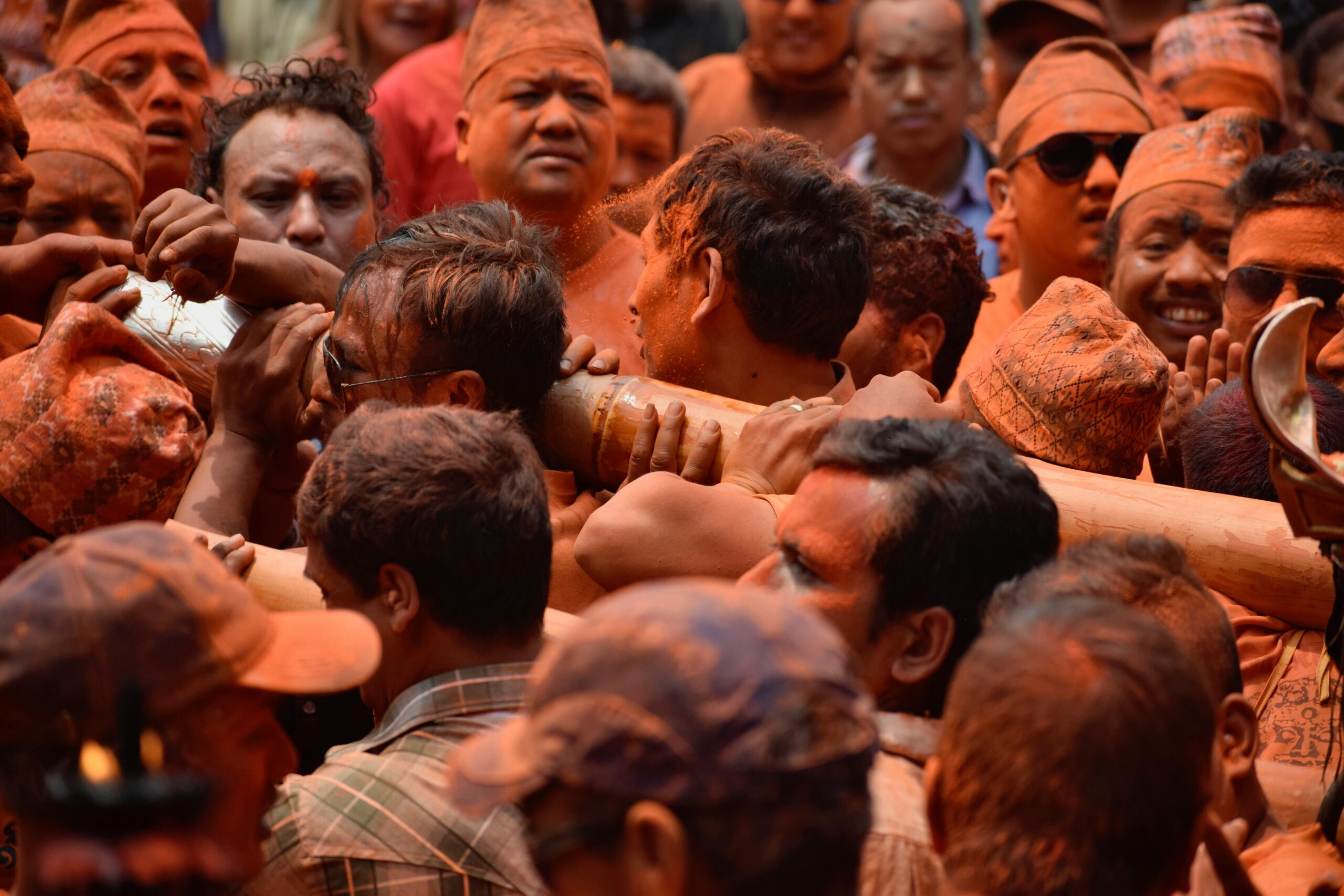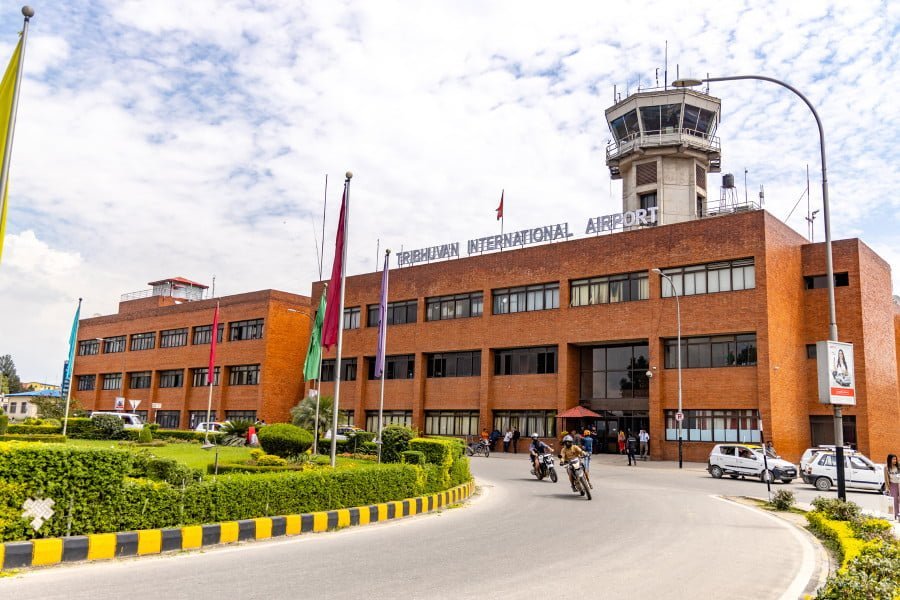In Lhasa to Kathmandu Tour via Everest Base Camp we visit beautiful Tibetan cities and towns such as Tsedang, Lhasa, Gyantse, Shigatse, Sakya, Rongbuk and Zhangmu. One of the major highlights of this trip is reaching the base camp of the world’s highest peak, Mt. Everest, which we accomplish on the 9th day of our trip. During our Lhasa to Kathmandu tour, we visit popular Tibetan landmarks like Potala, Norbulingka and Yambulakhang Palaces, Tibet Museum, Barkhor Bazaar and Gyantse Dzong. This trip also includes touring quite a number of spectacular Tibetan monasteries including, but not limited to, Sera, Drepung, Samye, Phalkot, Shalu, Tashilhunpo, Sakya and Rongbuk, the world’s highest monastery. On the trip, we also visit the 15th century Ganden Monastery and explore the Chim Phu and Drayerpa caves, which are still a meditative sanctuary for Tibetan monks.
Trip Highlight
- Kathmandu Sightseeing
- Potala Palace
- Everest Base Camp
- Mountain Range
- Culture and History
Itinerary
You arrive at the Gonggar Airport in Lhasa, Tibet’s administrative capital and one of the highest cities in the world. If you fly in to Lhasa from Nepal, you will enjoy an hour of breathtaking views of The Himalayas on what is considered to be one of the most beautiful air routes in the world. If you choose to travel via mainland China, you may fly in or take the world’s highest train route to Lhasa. You will be greeted by a representative of Alpine Club of Himalaya upon your arrival at the airport or train station. You are advised to rest for the rest of the day to adjust to the altitude and minimize altitude sickness, as Tsedang has an elevation of about 3,100 m (10,170 ft) and lies in the centre of the Tibetan Plateau with the surrounding mountains rising to 5,500 m (18,000 ft), and thus the air only contains 68 percent of oxygen. Overnight in Tsedang.
On the way to Lhasa, we visit Samye Monastery, the first Buddhist monastery built in Tibet, located in the north bank of the Yarlung Tsangpo River. The Monastery is laid out in the shape of a giant mandala, with the main temple representing the legendary Mount Meru in the centre. Other buildings in the corners and cardinal points of the main temple, represent continents and other features of tantric Buddhist cosmology. Next we visit the Chim Phu caves, which is located above the monastery. Also spelt Chim-Puk, the caves were once a retreat of Guru Rimpoche. Pilgrims generally begin five hour walk to caves early in the morning, before sunrise. Then we visit the beautiful Yambulakhang palace perched on a pinnacle above the Yarlung river valley. It was built for the first Tibetan King Nyatri Tsedpo who is believed to have descended from heaven. We continue to Lhasa. Overnight in Lhasa.
Sightseeing in Lhasa begins with a visit to the Potala and Norbulingka Palaces. Built in the 17century, Potala Palace provides amazing views of the entire city and houses the private quarters of the Dalai Lama, numerous grand state rooms, and chapels. Norbulingka Palace is the summer palace of the Dalai Lama and houses what is considered to be the largest man-made garden in Tibet. Next, we visit the Tibet Museum, the official museum of Tibet, which has a permanent collection of around 1000 artifacts related to the cultural history of Tibet. Overnight in Lhasa.
We visit the Drepung Monastery, Sera Monastery, Jokhang Temple, and Barkhor Bazaar. The Drepung Monastery, which was built in the 14th century, is believed to have sheltered around 10,000 monks in the past. The history, culture, and religious beliefs of the Tibetan people are strongly concentrated and centered in this marvelous monastery. The Sera Monastery is a preserved monastery with white-washed walls and golden roofs. Jokhang Temple is another important sacred site which unravels more deep-seated mysteries of Tibetan Buddhism. We then stroll through the Barkhor Bazaar (market). With its open air stalls, shops and crowd of pilgrims, it is the epicentre of Lhasa. Overnight in Lhasa.
In the morning, we drive to Ganden Monastery, one of the “great three” Gelug university monasteries of Tibet located at the top of Wangbur Mountain at an altitude of 4,300m. Ganden Monastery has extremely delicate and fine murals and sculptures, with more than two dozen major chapels with large Buddha statues. The monastery also houses artifacts that belonged to Tsongkhapa, including his tomb. It also has an armor suit decorated with gems worn by Emperor Qianlong, which was bestowed to the monastery as an offering to Tsong Khapa, founder of the Gelug sect. We then drive to Drayerpa Cave located in a beautiful valley with a stunning landscape, that has more than 30 caves for Lamas who wish to meditate. In the evening, we drive back to Lhasa. Overnight in Lhasa.
Today, we take a scenic drive to Gyantse, located in the Nyang Chu valley on the ancient trade routes from the Chumbi Valley, Yatung and Sikkim. We will cross the Karo La (5,010m/16,432 ft) and Kamba La (4794m/15,725 ft) passes, the beautiful Nazin Kang Sang glacier (7,252m), and Lake Yamdrok Tso (Turquoise Lake), one of the three largest sacred lakes in Tibet, also believed to be a transformation of a Tibetan goddess. If lucky, you may see huge glaciers tumbling down to the road before reaching Gyantse. In Gyantse, we visit the Khumbum Stupa, Phalkot Monastery, and the Gyantse Fortress that was constructed in 1390 and guarded the town. The town is surrounded by a wall 3 km long. Overnight in Gyantse.
We drive towards Shigatse, the second largest city in Tibet, and on the way, we visit the Shalu Monastery, founded in 1040 and known for its beautiful ancient mural paintings. We then visit the massive and magnificent Tashilhunpo Monastery, a historic and culturally important monastery in Shigatse founded by the 1st Dalai Lama in 1447. Overnight in Shigatse.
After breakfast, we leave Shigatse for Rongbuk. On the way, in Sakya, we visit the Sakya Monastery, which is the ancestral temple of the Sakyapa sect of Tibetan Buddhism. The main architectures inside the castle are the Dajing Hall, the Buddhism Hall and the hall where the Sakya archbishop lived. We drive to Rongbuk, and visit the Rongbuk Monastery, the highest monastery in the world, which lies near the base of the north side of Mount Everest at 4,980 metres (16,340 ft) above sea level, at the end of the Dzakar Chu valley. Overnight in Rongbuk.
We drive towards the Everest Base Camp (5,250m/17,220ft) while enjoying views of high peaks such as the Cho Oyu (8,201m/26,906 ft), Shishapangma (8,013m (26,289 ft) and the mighty Everest, known as Mt. Chomolongma in Tibet. We will make an approximately 16km round trip around the Everest Base Camp. The base camp itself is dry and barren, but the view of Everest is spectacular with its north face towering above us.
We then journey on to Zhangmu, enjoying fabulous views of two spectacular passes, the Thong La pass (5050m/16,568ft) and Lalung La pass (5082m/16,668 ft), and the Himalayan mountain range including Mt. Everest (8848m/29,028 ft) and Shishapangma (8,013m/26,289 ft). We drive down a steep winding road to Zhangmu, a small Tibetan town near the Nepal border. Overnight in Zhangmu.
Note: On rare occasions, due to bad weather or political riots, the local government may close down the road to the Everest Base Camp for safety reasons, and without prior notice!
We take a 30-minute drive from Zhangmu to Kodari where we must pass the Tibetan immigration checkpoint.
Upon crossing the Sino-Nepal Friendship Bridge over the Bhote Koshi River, you will be greeted by our Alpine Club of Himalaya representative. You bid goodbye to your Tibetan guide and drive back to Kathmandu. Overnight in Kathmandu. (Cost of staying in Kathmandu not included).
Cost Include
- All necessary Tibet travel permits
- Pickups and drops from airport andHOTEL(s)
- Everest National Park admission fee and Grass dame charge
- Use of private vehicles (van or Hiace or bus) for transportation
- Accommodation in Tibet on twin sharing basis with breakfast
- English speaking, trained and experienced Tibetan guide
- All fees for sightseeing and visits to monasteries as outlined in the itinerary
- All applicable taxes and service charges
Cost Exclude
- Train ticket from China to Lhasa
- Chinese visa fee
- International flights from Kathmandu to Lhasa or from China to Lhasa
- Accommodation in Kathmandu
- Travel insurance
- Meals other than breakfast in Tibet
- Tips for guides and driver
- Nepal visa
FAQs
Your safety is of paramount importance to us at Alpine Club of Himalaya. We have the absolute authority to cancel the trip or change the itinerary, when deemed necessary or when we have reason to believe your safety is at stake. Weather conditions, the health condition of a group member, natural disasters, and such, can contribute to changes in the itinerary when traveling in remote mountainous regions. In these extreme situations, we kindly request that you offer your full co-operation to the trusted leader of the group appointed by Alpine Club of Himalaya. However, we assure you that we will make every effort to keep to the above itinerary.
-
highly recommendedBenfrom NepalJuly 25, 2022Memorable trek, highly recommended to all !!!Date of Experience: March, 2019
-
Highly recommended to allTrevorfrom FranceApril 27, 2022We booked this tour with Alpine club of Himalaya. Sujan planned this journey very well and went successful. During this tour to Lhasa to Kathmandu Via Everest Base Camp we visited beautiful Tibetan cities and towns such as Tsedang, Lhasa, Gyantse, Shigatse, Sakya, Rongbuk and Zhangmu. One of the major highlights of this trip was reaching the base camp of the world’s highest peak, Mt. Everest, which we accomplish on the 9th day of our trip. During our Lhasa to Kathmandu tour, we visit popular Tibetan landmarks like Potala, Norbulingka and Yambulakhang Palaces, Tibet Museum, Barkhor Bazaar and Gyantse Dzong. This trip also includes touring quite a number of spectacular Tibetan monasteries including, but not limited to, Sera, Drepung, Samye, Phalkot, Shalu, Tashilhunpo, Sakya and Rongbuk, the world’s highest monastery. On the trip, we also visit the 15th century Ganden Monastery and explore the Chim Phu and Drayerpa caves, which are still a meditative sanctuary for Tibetan monks. This is highly recommended to allDate of Experience: June, 2019
Write a Review Cancel reply
Thank you. Your review will appear after admin approves it.
Please fill all the fields.













